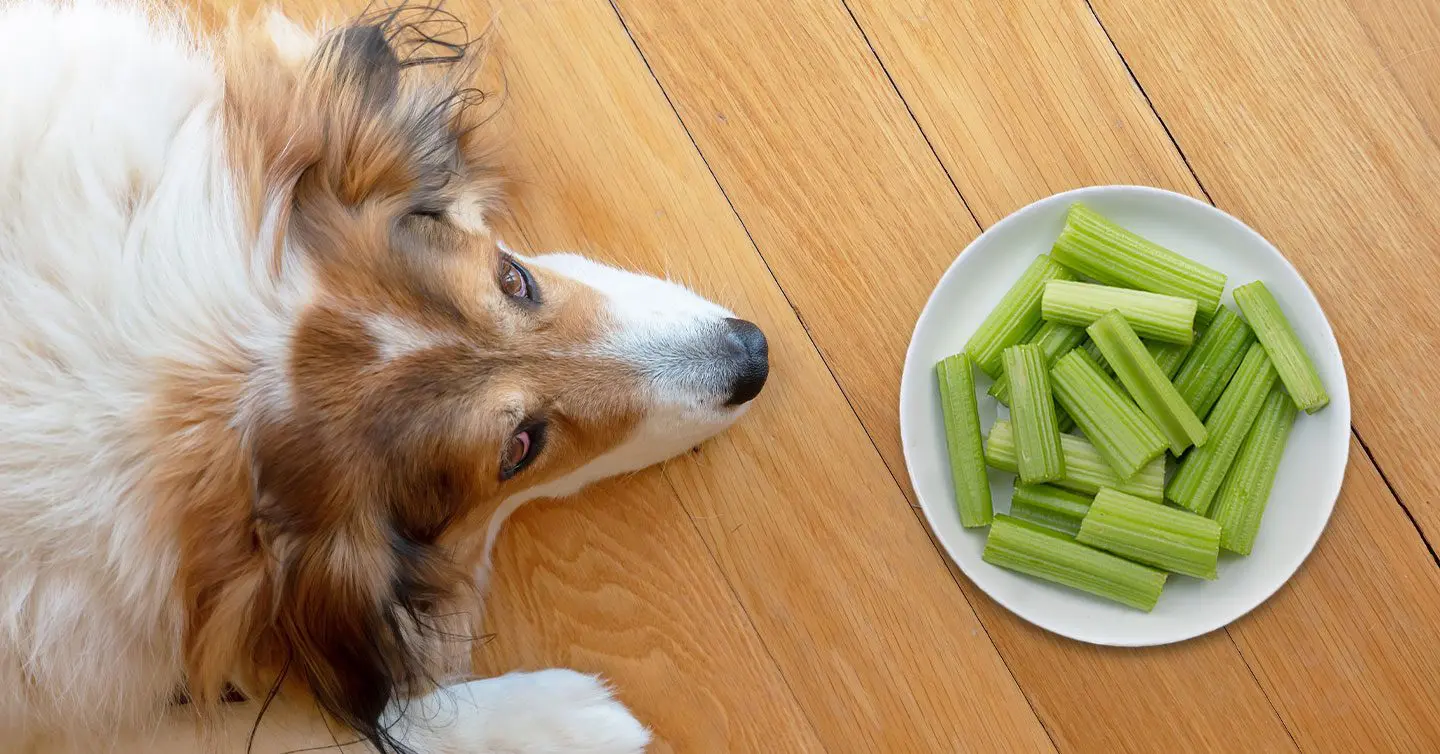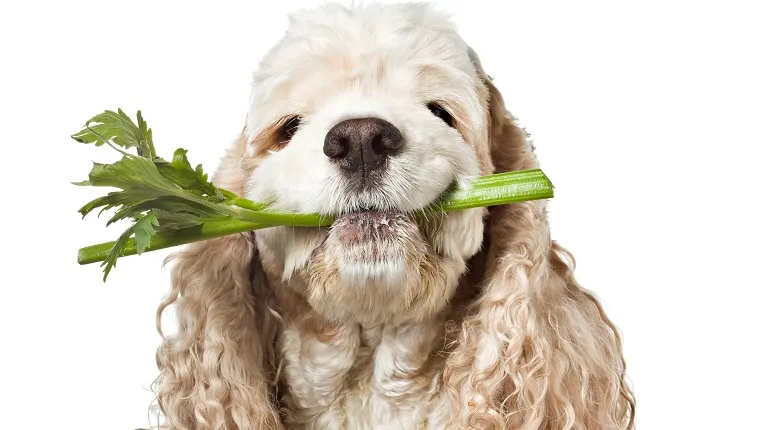If you’re a dog owner, you’re probably always on the lookout for healthy and safe snacks to give to your dog. One question that often comes up is whether dogs can eat celery. Well, the good news is that celery is generally safe for dogs to consume. However, there are a few things to keep in mind to ensure your dog’s well-being. So let’s find out whether celery is good for gods or not.

Is Celery Good for Dogs?
Celery can be a healthy and nutritious addition to your dog’s diet in moderation. Here are a few reasons why celery can be good for dogs:
1. Hydration: Celery is mostly water, which can help keep your dog hydrated. It can be an excellent snack option, especially during hot summer days or after a long walk.
2. Low in Calories: If your dog is watching their weight, celery can be a great low-calorie treat. A large stalk of celery contains only about 9 or 10 calories, making it a guilt-free option for your dog.
3. High in Fiber: Celery is packed with fiber, which can promote healthy digestion in dogs. It can aid in regulating bowel movements and may help alleviate constipation.
4. Vitamins and Minerals: Celery is rich in vitamins A, C, and K, as well as potassium and folate. These nutrients can contribute to your dog’s overall health and well-being.
How to Serve Celery to Your Dog
When it comes to feeding your dog celery, there are a few things you should keep in mind to ensure their safety and enjoyment. Here’s how to serve celery to your dog:

- Chop it up: Dogs have a harder time chewing and digesting large pieces of food, so it’s important to chop the celery into small, chewable pieces. This will help prevent choking and make it easier for your dog to enjoy.
- Raw or cooked?: Dogs can safely eat celery both raw and cooked. Some dogs may have a preference for one over the other, so feel free to experiment and see which one your dog enjoys more. Just remember to avoid using any seasonings, oils, or additives when cooking the celery.
- Feed in moderation: While celery is safe for dogs to eat, it should be served in moderation. Too much celery can cause digestive upset in some dogs, so it’s best to stick to small amounts as an occasional treat or snack.
- Monitor for allergies or sensitivities: Like with any new food, it’s important to introduce celery gradually and monitor your dog for any signs of allergies or digestive issues. If you notice any adverse reactions, such as vomiting or diarrhea, stop feeding celery and consult your veterinarian.
- Wash thoroughly: Before serving celery to your dog, make sure to wash it thoroughly to remove any pesticides or contaminants. Alternatively, you can choose organic celery to minimize the risk of exposure to harmful chemicals.
How Much Celery Can Dogs Eat?
When it comes to feeding your dog celery, it’s important to remember that moderation is key. While celery can be a healthy addition to your dog’s diet, it should be given in appropriate amounts based on their size and weight. Here’s a guideline to help you determine the right amount of celery for your pup:

- Small dogs: For smaller breeds, offer just a few bite-sized pieces of chopped celery. This ensures they can easily chew and digest it without any issues.
- Medium to large dogs: Larger dogs can safely consume a small handful of chopped celery. However, it’s crucial to keep an eye on them for any signs of digestive discomfort after introducing a new food item like celery.
Frequently Asked Questions
Why can’t dogs eat celery?
Celery can pose a choking hazard, especially for small dogs. To prevent this, cut celery into bite-size chunks before feeding it to your dog. This will also make it easier to measure their portion size.
Is celery a laxative for dogs?
Celery is a good source of dietary fiber, which can help regulate bowel movements. If your dog is experiencing constipation, adding celery to their diet may be beneficial.

Hey there, I’m Janet Brooks, a dog-loving student from California. I’m all about helping pups in need, especially those without homes. Me and my awesome friends work together to give shelter and love to stray dogs. Oh, and I also write blogs about dogs to share helpful info.